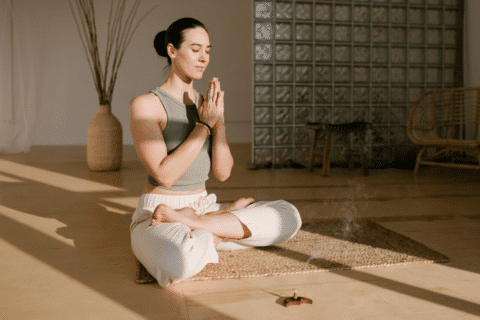If you’re in that period of life known as midlife—let’s just say anytime after turning 30, and/ or after having kids—you may have noticed that you have less energy than you used to and your body doesn’t seem to work the way it did. While it’s tempting to blame this on the demands of raising children, it’s not entirely their fault. (Unlike the chronic fatigue and random infections that you now consider normal—that stuff really is their fault.)
In midlife, your body goes through various unwelcome physiological changes — aerobic capacity diminishes, you burn fewer calories (thus increasing the chances of weight gain), and muscle mass tends to drop. You might also find that it’s harder to find time for non-family related activities, given your obligations. And studies also show that it can be hard to make new friends once you enter your fourth decade.
That’s the bad news.
The good news is that you can deal with these problems — you just have to start exercising again. (No, really. This is good news.) The question is how. The less fit you feel, and the busier you are with work and family, the more challenging it can seem to get back into an exercise program or adult sports. However, we have some tips on how to start exercising regularly again, how to stick with it, and some non-physical benefits of increased fitness that might give you added motivation.
Just get moving
No matter your fitness level, anyone can get into a routine. It doesn’t matter the type of exercise you choose, as long as it’s something you enjoy doing and it contributes to your overall health and well-being.
“Whether you grew up as an athlete or you’ve never worked out before, start slow,” says John Thornhill, a master trainer at fitness app Aaptiv. (Note: All Haven Life customers get a yearly subscription to Aaptiv at no cost as part of the Haven Life Plus rider included in the Haven Term life insurance policy.) “As we age, we may observe new aches and pains that we didn’t experience before,” he notes. “A great way to mitigate that is to find low impact exercises such as incline walking, cycling, elliptical or swimming. You can get a fantastic workout without the stress on your joints.”
If even that sounds ambitious, Thornhill suggests beginning with “brisk walking around the neighborhood or to and from where you’re going: it’s a great way to get moving. If you have a car, park further away from your destination so you have the opportunity to get more steps in. Other possibilities: Taking stairs instead of the elevator. Doing a lap around the office every hour or so. Some light yoga. Make some of your meetings walking meetings, rather than sitting meetings. “Small measures add up over time,” Thornhill notes.
Life insurance for people with a life
You budget online. You invest online. Why not apply for your life insurance online?
Read moreNo (wo)man is an island
Another key factor in increasing your physical activity is to avoid turning it into a chore. “Make sure you find activities that you genuinely enjoy doing, that way you’ll stay consistent,” says Thornhill. If you loved playing basketball in college, try joining the local Y for pickup games or find a local league such as the NY Urban Professionals Basketball League, which features players with a range of ages and skill levels. Most cities have an equivalent, and beyond adding fun and structure to your workout regimen, joining a team also links your personal fitness goals to a responsibility to other people, which makes you more likely to keep going.
If team sports aren’t your thing, Thornhill suggests you “tell your friends that you’re making fitness a priority, so that you have an accountability partner motivating you.” Maybe it’s someone who will walk with you around the block, or even just a willing colleague for those aforementioned walking meetings. You can also find running clubs, or other organized groups devoted to individual sports, online or on social media that will motivate you to increase your daily physical activity.
Use technology – and we don’t mean a treadmill
Inevitably, some sports are more accessible than others. If you like basketball or soccer, chances are you can find a pickup game, but if you want to play something less ubiquitous or your schedule doesn’t allow you to head down to the local park in hopes of bumping into other players, try Meetup.com or Opensports.ca.
Want to play badminton in New York or volleyball in Chicago? Both websites have groups for almost every sport and a wide range of skill levels. They’re also international, so if you find yourself in an unfamiliar city and want to break a sweat by doing something more exciting than visiting the hotel gym, there’s a good chance you can find like-minded souls online. Think of them as marriage-appropriate versions of Tinder.
Want to help your kids? Get away from them
Exercise is obviously good for your health, but there’s more to it than that. As your children become older and turn into social beings, they can expand your social world — you make mom and dad friends. In the beginning, though, “the feeling of isolation is real,” says Jack Macartney, editor of parenting website All The Young Dads. “It can be claustrophobic being stuck at home with a child,” he says, and getting out for exercise is “a healthy escape from the 24/7 demands, particularly on mothers. It’s a moment of peacefulness that allows you to download stress and align your thoughts, and a great way to remind yourself that there is life beyond parenting.”
Also, as much as a workout regimen can be a useful break from being a mom or dad, Macartney and his wife find that “the general benefits of health and fitness have absolutely contributed to having the necessary energy and emotional strength to parent.” In other words, escaping from your kids can be good for them (and for you).
It’s an idea seconded by Jeff Segura, a young father who runs the Daddy Style Diaries blog. When Segura’s children were little he gained 35 pounds. After returning to exercise for 15-45 minutes a few days a week, “I noticed that my memory improved drastically,” he says. “More than likely because of improved blood flow. As parents, we have little ones that look up to us. Being present for them is essential, and we should strive to be the best version of ourselves so we can be the best for them.”
Reap the ancillary benefits
As Thornhill says, “There are countless benefits to exercise that goes beyond the physical,” including “endorphin boost, mental clarity, reduced stress and better sleep,” all of which are things that can be challenging to find when you’re a parent. If all that sounds appealing, just know that “it’s never too late to take your health into your own hands,” he says.
But let’s go beyond that for a minute: Consider what we said at the outset about the difficulty of making friends and advancing your career. Exercise can be a great way to do exactly that. That aforementioned running buddy might join you for a post-jog beer. And that beer might turn into a conversation about work and might lead to a new opportunity. Or, you know, just a good old-fashioned drink and a conversation.
And science shows that benefit boomerangs back to your health. People with active friendships have lower levels of interleukin-6, which is a factor in osteoporosis, arthritis, Alzheimer’s disease and even cancer, according to the National Institutes of Health.
So what are you waiting for? Get training today to live an active, healthy lifestyle.






